|
Title: | UK Rolling Stock series / UK Wagons |
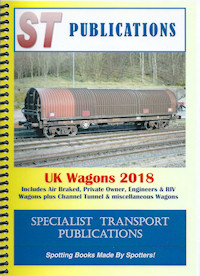
|
| Author: | Various including Martin Hall, Tom Dennett and Dan Adkins |
| Publisher: | HB Publications / ST Publications |
| Format: | Book |
| Subject: | Wagons |
| Category: | Numbers - Current |
| Spec: | A5, spiral bound, laminated covers |
| Publication date: | 2010-present |
| Summary: | Having worked with the ICRS for several years, HB Publications produced stock books under its own name from 2010. The latest wagon books (now under the ST brand) are very clear and concise. |
| Review: | During 2009 the relationship between HB Publications and the Inter-City Railway Society ended and each went on to produce their own versions of the former Wagon Datafile series. The initial HB Publications titles appeared in three parts in 2010 under the PTI (Public Transport Images) brand. The three titles cover Powered Stock, Hauled Stock and Engineers Stock. This method of distinction was interesting but did have its drawbacks. For example, the Hauled Stock volume covered coaches, while it also included some wagon types that were technically engineers stock (such as the HQA Autoballasters). In many respects the books followed the format of the earlier series, such as showing individual TOPS code variations using symbols (for some reason, some showed the full 4-letter AARKND while others just had the 3-letter CARKND). However, wagons with RIV numbers only showed the UIC type code, not good for those of us who hadn't got used to wagons being called 'Sffggmrss' or whatever! The Engineers Stock volume was rather different, with many pages devoted to small plant and road-railers (including multiple tables listing the same vehicles in different orders). Relatively few wagons were included, just those in the CEPs or DB-prefixed series. If you were interested in diggers that could run on railway tracks then this book was for you! The first editions were compiled by Martin Hall, and to be fair to him, he did a fantastic (and un-enviable) job of bringing together everything on the rails.
The next time I came across this series was in 2018, by which time it was being published under the ST name and the way the fleet was split between books had reverted to a more conventional distinction. Although only 100 pages, the 2018 wagon book had a very clear layout and appeared to be accurate and comprehensive. |
| Reviewed: | 16/03/2010 by Thomas Young (Comments made by others can appear in the notes section towards the bottom of this page) |
| Sample pages: | (Click on any image to view full-sized in a new window)
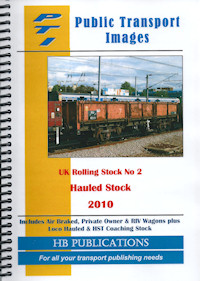
The cover of the volume covering hauled stock. The powered stock volume has not been reviewed.
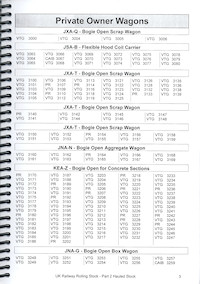
The private owner wagons section was fairly conventional. Although build details were not included, full 4-letter TOPS codes were provided.
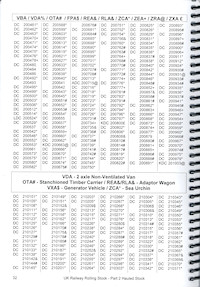
The air-braked wagons section used symbols to show TOPS code variations, although curiously only 3-letter codes were shown here.
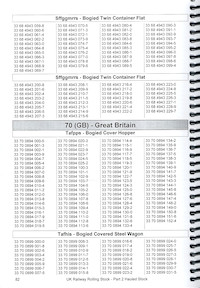
The RIV numbers were arranged by country code. Another oddity is that TOPS codes were not mentioned at all in this section, just the UIC codes like Tafpps.
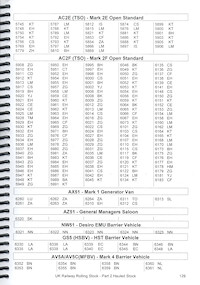
In a turnaround of normal conventions, loco-hauled coaches were relegated to a 15-page section at the back of this 146 page book. The only details shown were the allocations.
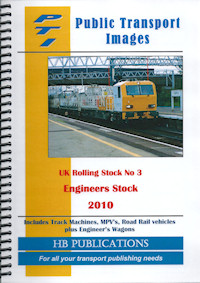
The cover of the Engineers Stock volume, this running to 166 pages.
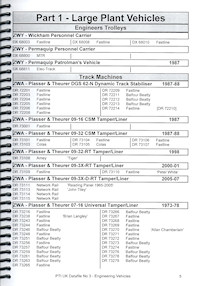
The first section felt familiar, covering CEPS-numbered track machines.
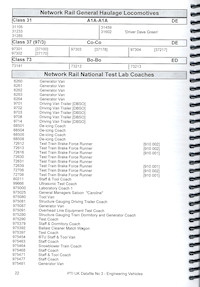
Departmental units, locos coaches and snowploughs were listed next, followed by London Underground track machines and locos.
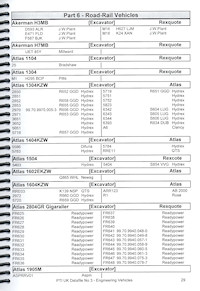
The bulk of the book (109 pages) was taken up with listings of road-rail vehicles and small plant, the first section (33 pages) showing road-rail vehicles organised by type.
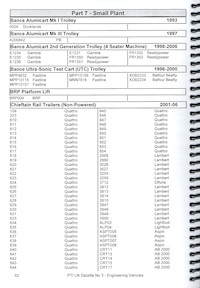
The main listing of small plant was also arranged by make/model and ran to 11 pages.
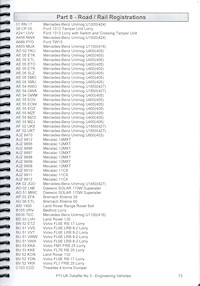
The next 13 pages were a list of road registrations carried by road/rail vehicles. The type for each was given, but you would have to cross-reference this against the earlier section to find the owner/operator.
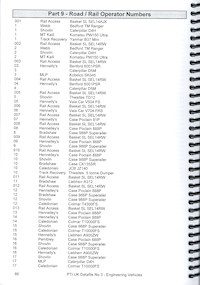
The next two sections (totalling 52 pages) listed the road/rail and small plant vehicles again, this time by operator number. There was no national numbering scheme at this time (RIV numbers later became standard), so some numbers appear multiple times.
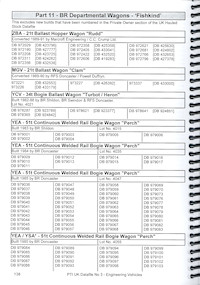
Back on familiar territory, part 11 listed the remaining DB-prefixed wagons, and was followed by lists of LUL and DLR wagons.
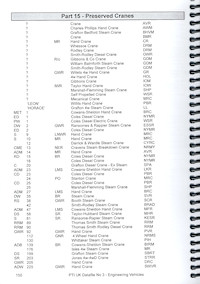
Towards the back were lists of preserved cranes and track machines, followed by appendices of vehicle operators and preservation sites.

I lost track of this series for a few years. As far as I can tell, HB publications became ST Publications, and by 2018 they were publishing stock books with a more conventional break-down. This is the UK Wagons book, with just 100 pages.
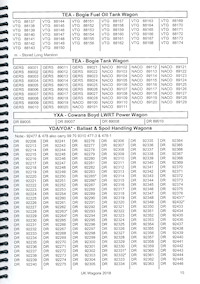
Track machines were not included but wagons that were numbered in the CEPS series were, although they were lumped in with the private-owner wagons (presumably since both had 5-digits numbers).
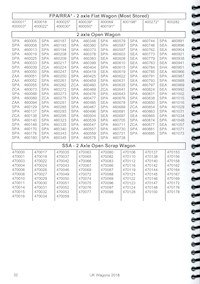
Despite the slimness of this book, individual TOPS codes were shown where needed, either using symbols or by listing the code with each number (as seen with the SPA fleet).
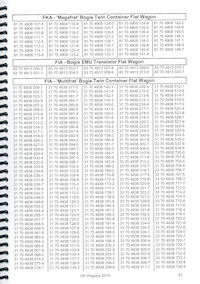
RIV numbers were still grouped by country code. TOPS codes were now included and the UIC codes no longer appeared.
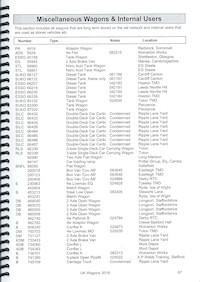
A couple of interesting lists appeared at the back. The first listed stored and internal user wagons, with IU numbers given in the notes column where relevant.
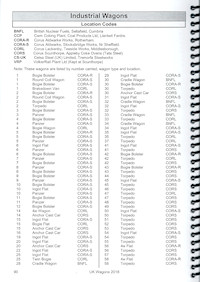
The final section was a listing of industrial wagons, mostly those at steel works. Note that many numbers appear multiple times. The list included ex-BR types such as the numerous cut-down BDA wagons at Lackenby, these fortunately retaining their BR numbers. |
| Notes: |
No notes have been left yet. ?There may be some notes posted but which have not yet been approved.
|
| Edits: | Record edited 1 time.
| Time / Date | Edited by | Change | | 00:52 on Mon 08/04/2019 | Thomas Young | New image added |
|

 Register
Register